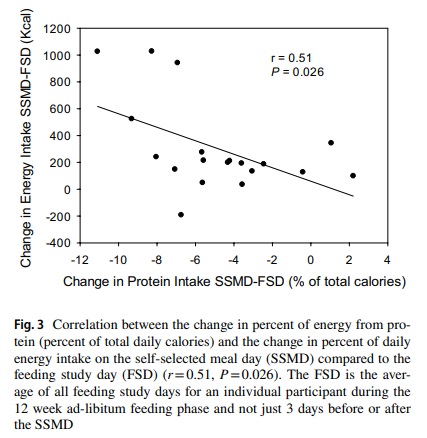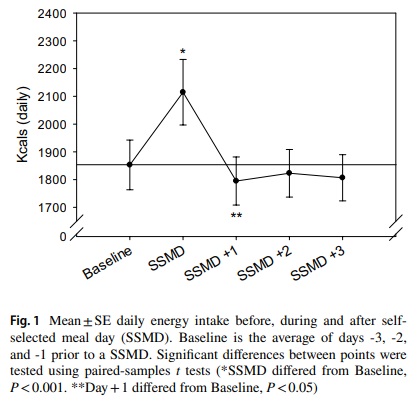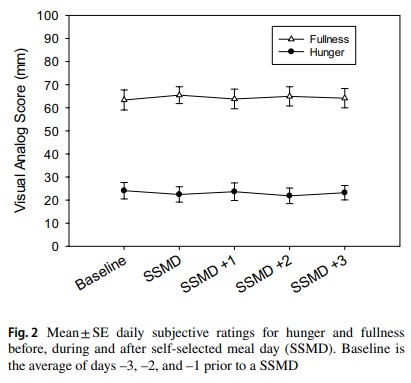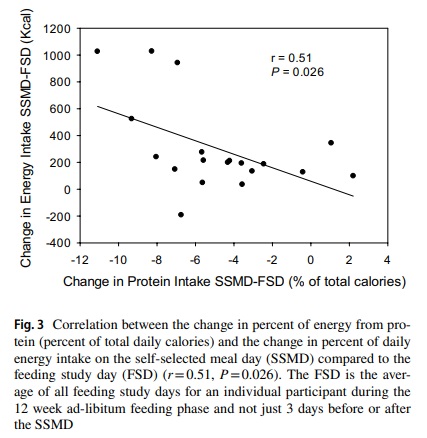
This one suggests that just one single meal lower in protein content may lead to increases in daily total caloric consumption in order to experience the same level of fullness and hunger suppression. 



- "Indeed, we found that the average macronutrient composition of the SSMD (Self-Selected Meal Day) meals was lower in both protein and carbohydrate, and higher in fat, than the study diet...
"...In addition, the daily caloric intake on the SSMD was 14% higher (or an average of an extra 262 total daily calories, P<0.001) than baseline daily intake...
"...This additional calorie intake occurred, however, without perceived change in fullness or hunger...
"...In other words, for participants to experience the same level of fullness and hunger suppression on the SSMD as during the preceding baseline feeding study days, they needed to consume an additional 262 cal...
"...These data support the concept of a central appetite set point in which the number of calories needed to achieve a level of expectant fullness and hunger, or meal satisfaction, is infuenced by diet composition, and is sensitive enough to respond to changes in a single meal."
- "We found that neither the change in the daily fat nor carbohydrate intake was associated with the increase in SSMD daily calorie consumption, but the reduction in protein intake was"
- "Upon resumption of the study diet that was, on average, higher in protein and lower in fat content than the SSM (Self-Selected Meal), daily calorie intake dropped significantly below baseline the day following the SSMD...
"...and remained non-signifcantly lower for the next 2 days...
"...These decreases in calorie intake in the days after the SSMD also occurred without changes in reported fullness and hunger scores and are consistent with a simultaneous restoration of enhanced satiety (and hunger suppression) at lower calorie intake."
TL;DR:
- Just one single meal with a lower protein content is associated with an increased daily total caloric consumption, and that seems to be happen in order to experience the same level of fullness and hunger suppression. 





- The excess food intake that is assumably caused by a single meal lower in protein content seems to be only partially, and very slightly, compensated upon re-establishment of a diet that consists of invariably higher protein meals. 

Self-selected meal composition alters the relationship between same-day caloric intake and appetite scores in humans during a long-term ad-libitum feeding study
doi.org/10.1007/s00394…
#nutrition #diet #protein #appetite #weightloss #obesity
doi.org/10.1007/s00394…
#nutrition #diet #protein #appetite #weightloss #obesity
• • •
Missing some Tweet in this thread? You can try to
force a refresh





